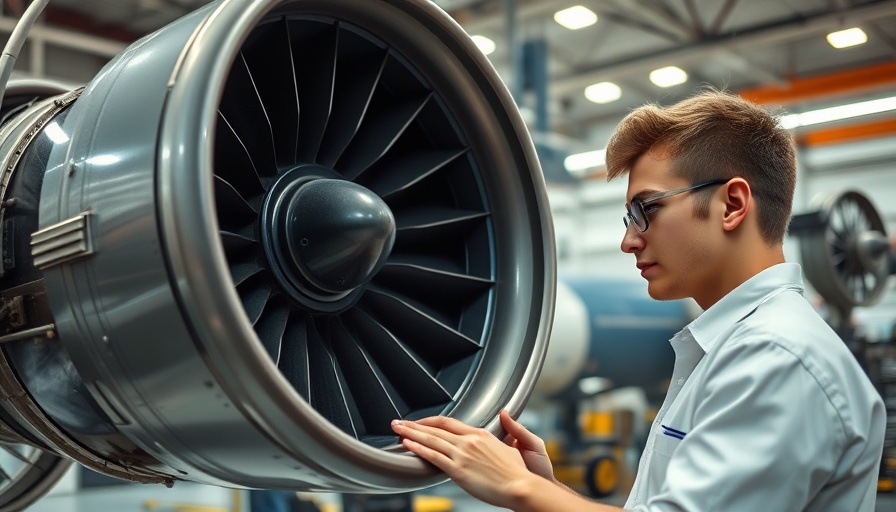
The Urgency of the Aviation Workforce Shortage
As the demand for air travel increases, the U.S. aviation industry faces a daunting challenge: a severe shortage of skilled technicians. Currently, about 40% of certified aircraft mechanics are over the age of 60, leading to concerns that many experienced workers will soon retire. This trend raises alarming questions about the sustainability of the workforce necessary to keep the aviation sector thriving.
Historical Context: The Rise and Fall of Aviation Jobs
During the boom of the 1980s and early 1990s, many airline technicians were hired, creating a strong talent pool. However, as time progressed without adequate recruitment of new blood, this pool began to dwindle. The industry is now facing a major transition, which is exacerbated by the global pandemic that has temporarily affected travel and aviation sectors. Rebuilding this workforce will require systemic shifts in how airlines and manufacturers attract talent, especially as competition for young workers heats up.
The Push to Attract Young Talent
Airlines are now trying various tactics to draw younger individuals into aviation careers. Programs that spotlight the importance of technical jobs, apprenticeships, and college partnerships are being initiated to raise awareness and interest. Notably, airlines are collaborating with educational institutions to enhance technical training programs, ensuring that prospective technicians gain the skills needed to succeed in this rapidly evolving industry.
Counterarguments: The Role of Automation in Aviation
Some industry experts argue that advancements in technology such as automation may impact demand for manual aviation jobs. While automation can make certain tasks easier and safer, it cannot fully replace the need for skilled technicians. Human oversight is essential for troubleshooting complex issues, conducting inspections, and ensuring safety compliance. Therefore, the role of a technician is expected to evolve but remains crucial despite technological advancements.
Future Predictions: The Road Ahead
Looking ahead, the aviation industry must think critically about recruitment strategies to prevent the looming technician shortage from impacting operations. The projected shortfall of 25,000 aircraft technicians by 2028 emphasizes the need for urgent actions. This scenario presents a unique opportunity for policy-makers to implement initiatives that not only promote aviation careers but also secure funding and support for educational pathways that lead to these positions.
Common Misconceptions About Aviation Roles
Many people underestimate the complexity and critical nature of careers in aviation. There is a misconception that aviation jobs are limited to pilots or flight attendants; however, a wide array of technical roles exists behind the scenes. These positions are essential for ensuring safety and efficiency, and they provide rewarding career paths for individuals who enjoy problem-solving and technical work.
Taking Action: How the Community Can Help
Communities and local governments have a significant role in supporting recruitment efforts within the aviation sector. Initiatives such as job fairs, career workshops, and partnerships with local schools can create awareness and inspire young people to consider a future in aviation. Highlighting successful technicians and fostering mentorship programs can also enhance interest and motivation among students.
Conclusion: A Call for Collaboration and Innovation
The aviation industry stands at a pivotal crossroads, with a pressing need for a skilled workforce to support ongoing growth and innovation. By addressing recruitment proactively and fostering collaboration among airlines, educational institutions, and communities, we can secure the future of aviation jobs in America.
 Add Row
Add Row  Add
Add 




 Add Row
Add Row  Add
Add 

Write A Comment